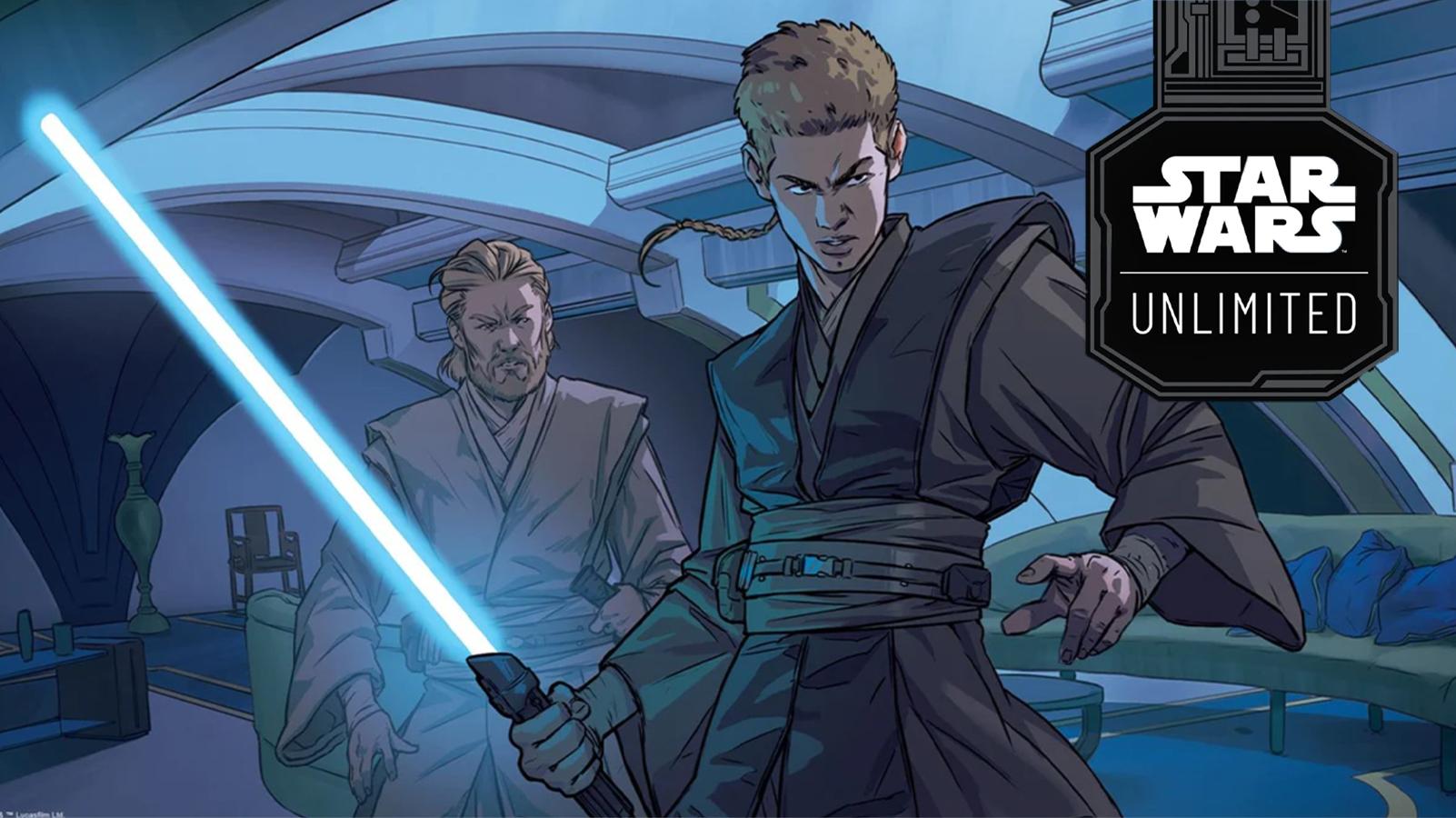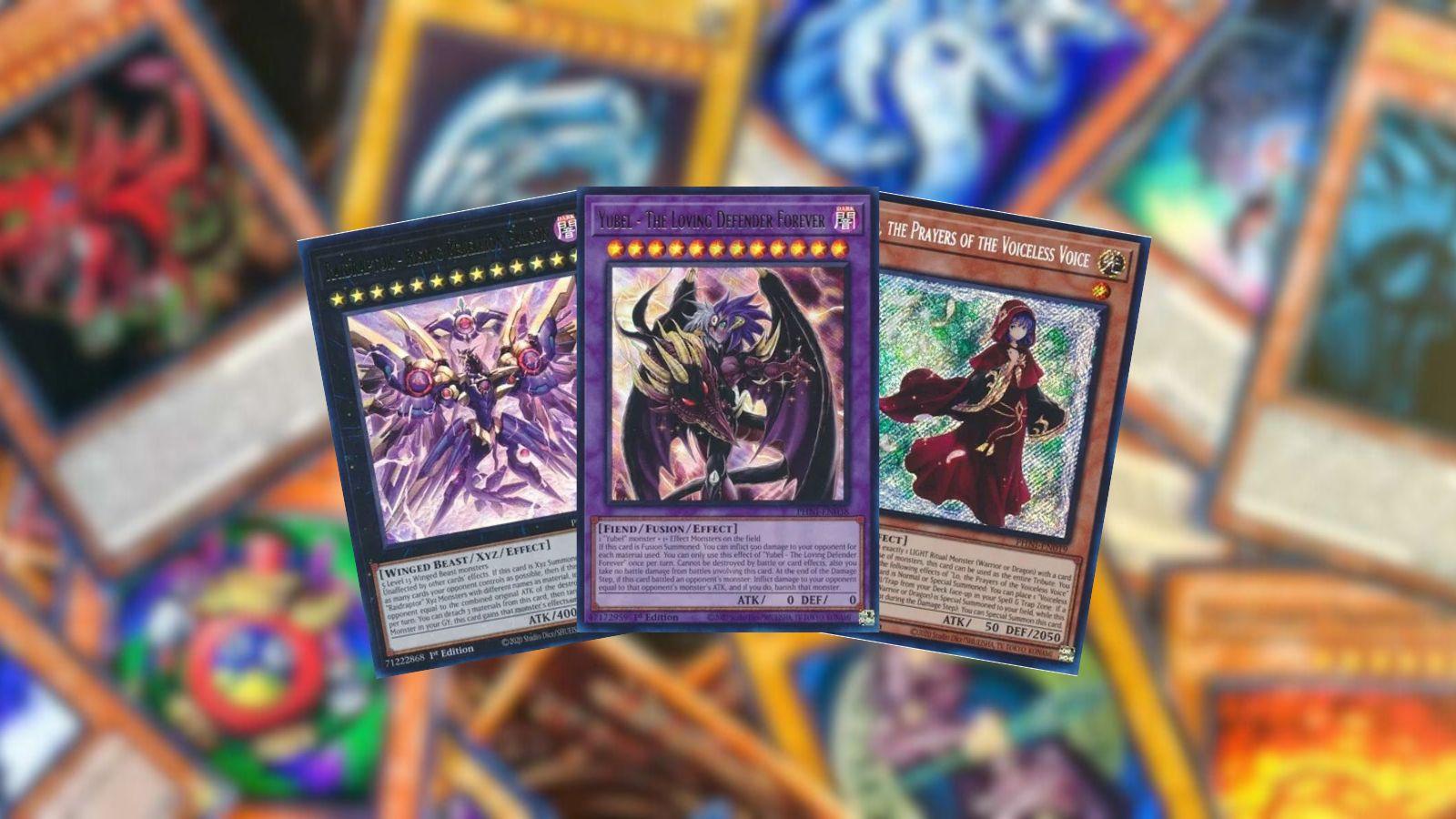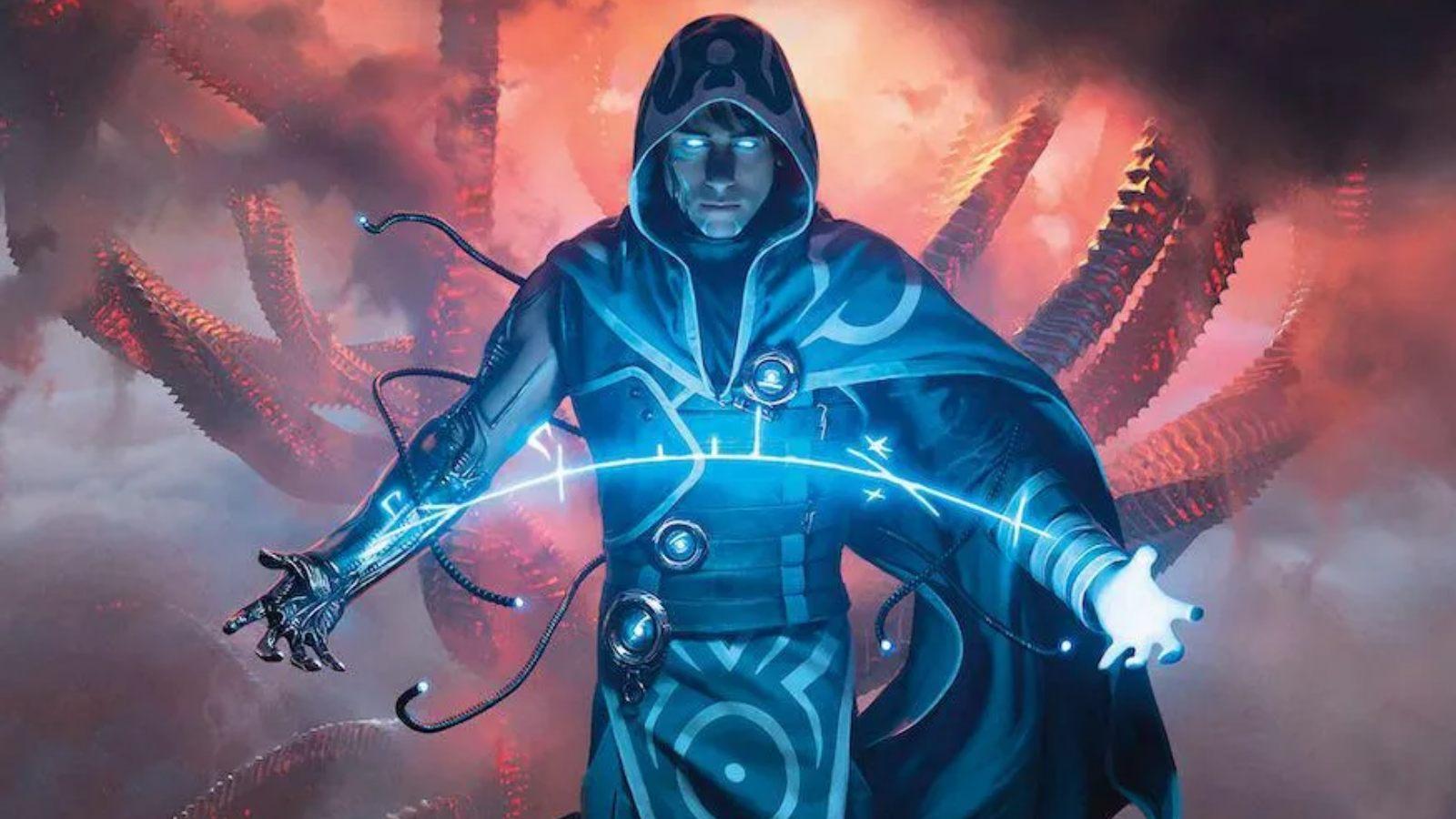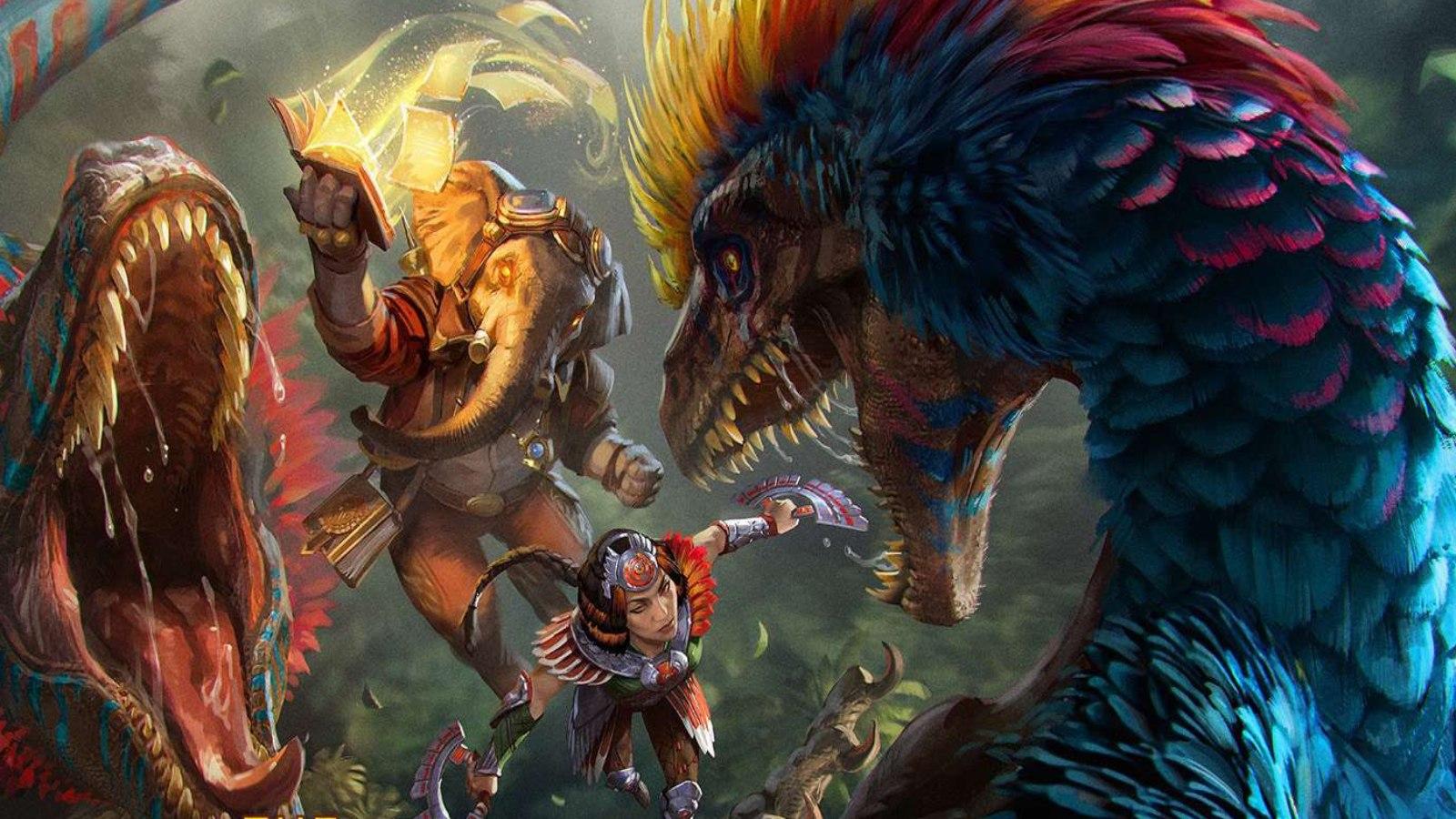How to play Magic: The Gathering
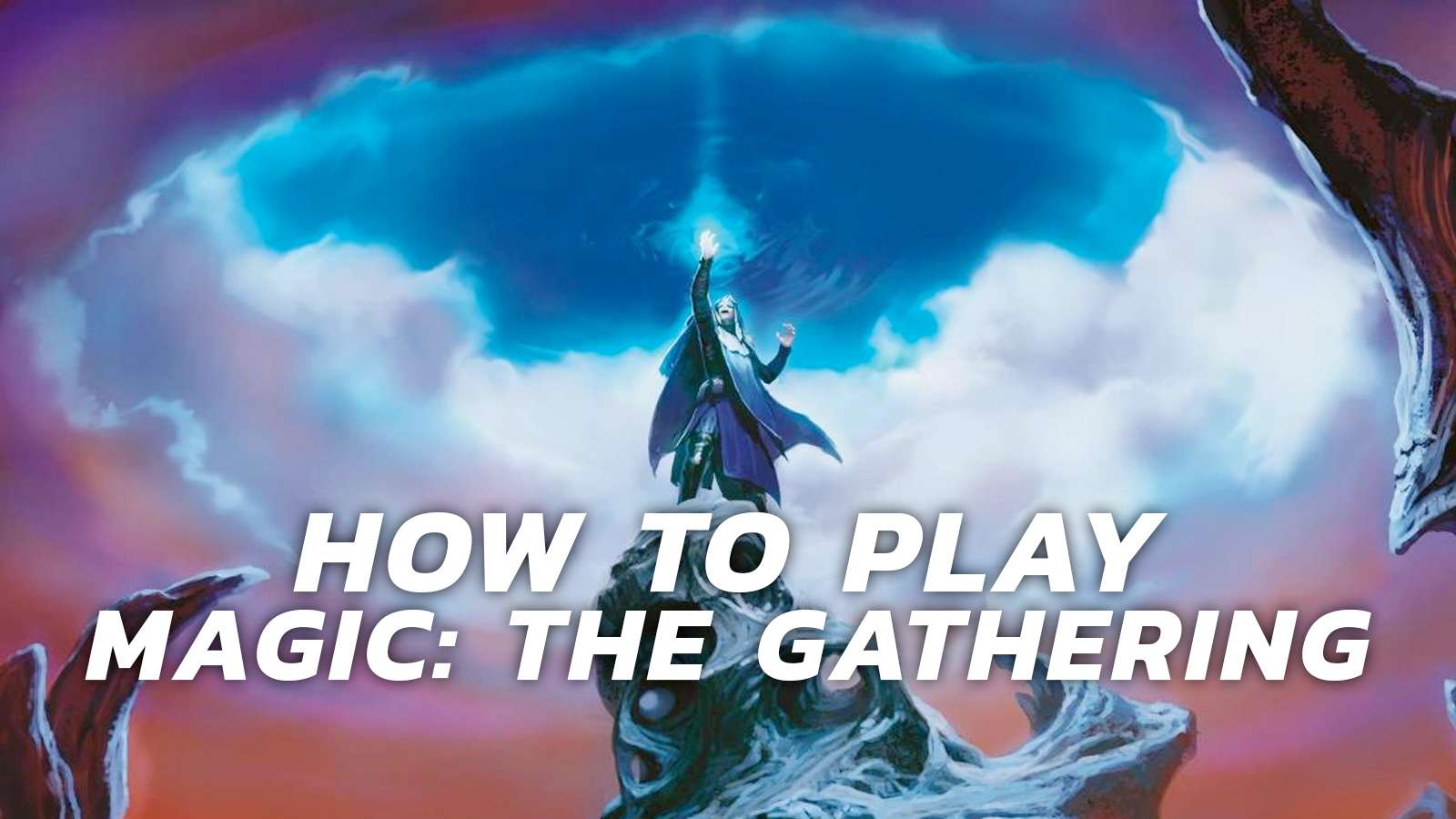
Magic: The Gathering might have a steep learning curve, but with our help, you’ll be slinging spells and casting creatures in no time at all.
Throughout the 30-ish years of Magic’s history, there has never been a better time to pick up the game and learn. From Starter Kits that will ease you into the game, and Magic Arena to visually demonstrate and teach, it’s literally never been easier.
However, the rules, massive stack of words and terms to learn can be incredibly daunting. While there’s tonnes of options out there, sometimes you just need a guide. We’re your guide.
Beginner Magic deck-building tips

For those just starting out, grabbing a preconstructed deck – whether starter or not – is always advisable. While these won’t be very good in your local store, they give you some idea of how a deck should be typically constructed.
You want at least 24 lands, and avoid over 60 cards (or 40 in limited formats like Draft). While you can technically have as many cards in a regular deck as you like, you have to remember you want to limit as much randomness as possible.
Aside from basic lands, you can only have four copies of a single card in a deck. Some cards allow you to circumvent this rule, like Shadowborn Apostle.
As you grow as a player, Magic’s deck-building will become something you can manipulate to your heart’s content. For instance, a deck I currently run only features eight creatures instead of the recommended amount.
Essentially, you want to make sure you hit a ‘curve’. As you play and turns progress, you should be able to ramp up to playing more powerful cards as your lands and mana options grow.
At the start, it’s also recommended to get familiar with each color and how they operate. Many mono-colored decks work great, with mono-black being a current staple in Standard formats.
However, going further out than this, two-color and three-color decks are all viable. Building these kinds of decks will teach you about synergies and combos, with popular color combos being things like Red/Blue or Black/White.
Outside of this, you begin having to balance what kind of lands you put in and whether or not the deck is consistent enough to be viable during play.
How to start a game of Magic

Each player will shuffle their decks, draw seven cards and decide whether to mulligan. During this time, you’ll also decide who goes first. Often times this is done with the roll of a dice for ‘higher or lower’ or could be the flip of a coin.
The loser of each game in a match (it’s a best two out of three) will then decide who goes first at the top of the next game.
What is a mulligan in Magic: The Gathering?
A mulligan in MTG is like a do-over before you start. If you draw your cards and aren’t happy with them, you can put them back, shuffle and draw again. After you’ve mulliganed, you have to put one card at the bottom of the deck to bring you down to six. You can keep mulliganing as much as you like until you hit zero cards in hand. We don’t recommend going below five.
When should you mulligan in MTG?
The times you should mulligan are when you have zero lands in hand at the start of the game. It’s best to almost always want to aim for at least three in your hand, as that should allow you to maneuver through each turn at the bare minimum.
You should also consider a mulligan if all the cards are too expensive for the early game. You want to have at least one or two cards that you can do stuff with during the early game.
How a turn works in Magic: The Gathering
Magic: The Gathering is a turn-based game, with players ping-ponging between each other in an effort to bring the life down to zero, or another win condition.
You’re not just locked into a turn though, as certain cards and abilities will let you intervene during the opponent’s turns.
Turns work in phases. If you’ve played Yu-Gi-Oh! before, it is very similar to that.

A very basic turn is like this:
- Upkeep
- This is where you’ll untap cards, resolve any effects, and draw for your turn
- Main phase 1
- Here you’ll cast any spells, or activate abilities that you can with the mana available. You’ll also play your land for turn to help you build resources
- Combat
- When you move to combat, players will “declare attackers” or skip it entirely. If you do declare attackers, the other player is then able to defend or pass
- Main phase 2
- Here you can do any more things you need to, cast sorceries, etc.
- End phase
- You can wrap up your turn here, or play any last instant cards or abilities that work at instant speed
How does combat work in MTG?

Magic: The Gathering is different from many of the card games it inspired. Unlike in Pokemon or Yu-Gi-Oh!, combat is mostly optional. While the ‘combat phase’ will always occur, you don’t need to attack each turn if you don’t want to. When you attack, those creatures – unless they have vigilance – will be tapped and unable to defend during your opponent’s combat phase.
You and an opponent also don’t need to defend. If it’s the start of the game and you both have 1/1 creatures out, it might just be worth it to let the one damage through and deal with the creature at a later time.
You’ll find Commander games will often skip the combat phase as players build up their board states to see how far things will get pushed.

How damage works
When you do enter combat, you compare the numbers in the corner of the card. This is the attack and toughness. Let’s use Llanowar Elves (a 1/1) and Storm Crow (1/2 with flying).
Llanowar Elves attack the player directly, but the opponent blocks with Storm Crow.
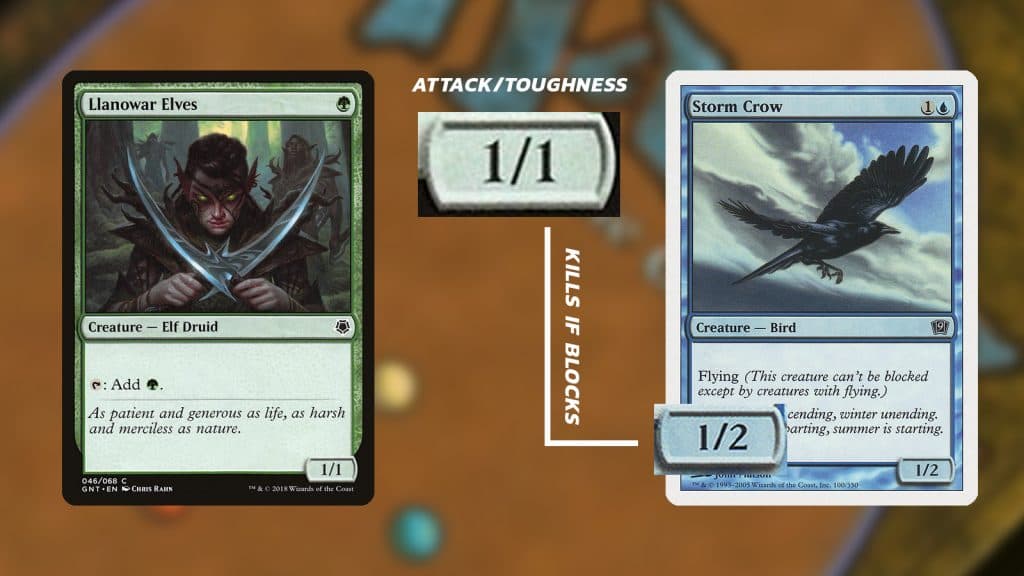
Once attackers are declared, you can’t then pull them out of combat. Defenders will then be declared under the same rules.
Storm Crow kills the Llanowar Elves – it goes to the graveyard – and is left as a 1/1 due to losing a point of toughness. At the start of the next turn, Storm Crow returns to being a 1/2 creature.
Abilities and keywords in combat

However, if we reverse it and have Storm Crow attack, its ability affects how combat plays out. Llanowar Elves don’t have flying, allowing Storm Crow to attack unimpeded. If we have a creature with Reach or Flying, we might have been able to block it. The player takes one damage.
What is priority in Magic?
During these phases, a thing called “priority” happens. Priority is when a player is given the opportunity to “respond”. This could be either by activating an ability of a card or playing an instant (or card with Flash).
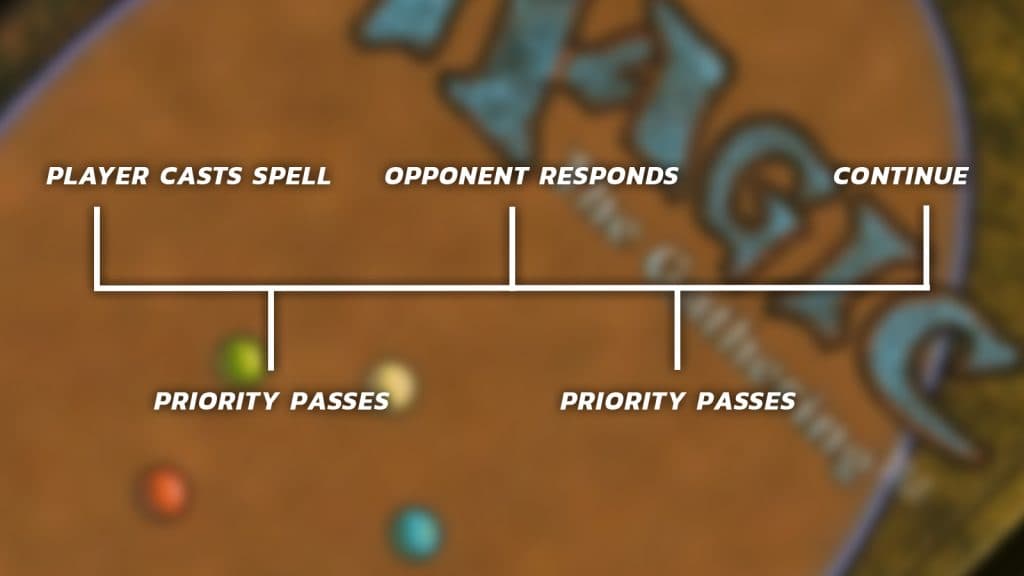
If a player casts Lightning Bolt, the other player can respond when priority passes to them and it begins to involve “the stack”. This response could be a counterspell, like Cancel, which will then eliminate the threat of Lightning Bolt.
However, the “ping-pong” aspect comes in when you start responding and the stack needs to be acknowledged.
What is the Stack in MTG?
The Stack is what MTG uses to determine whether or not spells ‘resolve’. The Stack is a term that is drawn from programming. As Magic: The Gathering was designed by Richard Garfield, a mathematician, a lot of the game is inspired by it and any adjacent subjects.
An excellent way to think of it, if you’re not maths-inclined, is the first one in is the last one out. You work from the top, determining whether or not something will resolve that caused the stack to be introduced to the game.
In our scenario above, Lightning Bolt would not happen because Cancel has overridden it on the stack.

The scenario above with Cancel could again be intervened with another spell. However, in our scenario, the player now uses Wizard’s Lightning, but the opponent who cast Cancel has no other cards to play.

Looking from top to bottom, the stack resolves Wizard’s Lightning, but Cancel counters Lightning Bolt. If the opponent had used another counterspell, neither would resolve but could leave the opponent at a disadvantage later in the game.
How to win Magic: The Gathering

There are numerous ways to win in Magic, with the main one simply reducing the other’s life total to zero. Once it hits zero, the game is over – unless there are no life-gaining effects in play.
Alternatively, with the current Standard meta, poison counters might be your new way to success. These can be done via cards with “Toxic” or “Infect” on them. After ten counters, that player loses.
Other ways include letting the other player run out of cards in their deck. The next time they try to draw, they’ll lose automatically.
There are also effects on certain cards that can influence the way the game can be won. For instance, Revel in Riches requires you to gain ten treasure tokens to win.
How legendary creatures work in Magic: The Gathering

Legendary creatures are often characters pulled from the story of the set. They have beefier stats, as well as abilities you might consider building a deck around in some formats.
They are, however, affected by the legendary rule. This rule works to eliminate having too many powerful cards all at once. You can’t have two of the same legendary creature on the battlefield at any time.
If you do, you have to sacrifice one once any enter-the-battlefield (ETB) effects resolve. This does count towards sacrificing abilities you might have going on.
What is a Planeswalker in Magic: The Gathering?

A Planeswalker card is a representation of an essential character in the story. They’re often powerful but can have major drawbacks in terms of casting costs. They have their own life total, called Loyalty, and can be independently attacked by another player rather than gunning for you.
Only one of the Planeswalker abilities can be used once per turn, and either adds or costs Loyalty. The bottom move is often called the “Ultimate” and can change the tide of battle entirely.
In War of the Spark, Planeswalker cards were a key feature and introduced ‘lesser’ versions of known characters. These sometimes only have one move with an active ability that persists through the game until they leave the battlefield.
Planeswalkers also use the Legendary rule.
Magic: The Gathering might have a lot, and its rules span thousands of pages, but we hope you got a good idea of how to start out.
If you click on a product link on this page we may earn a small affiliate commission.
